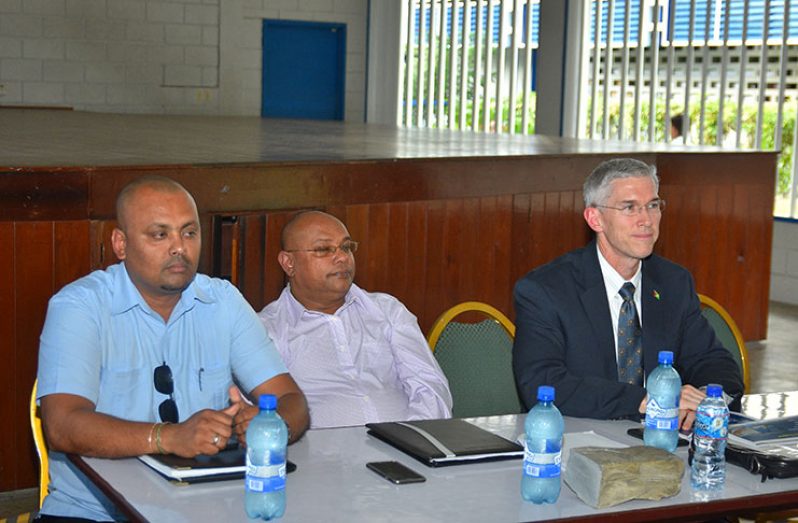–Liza Phase 2 scoping meeting hears
AT A Public Scoping meeting on Monday on the Liza Phase 2 Project, several persons from Georgetown expressed their concerns on the effects of oil production on the environment, highlighting waste management, emissions and air quality and the harming of aquatic species as some of their concerns.

This meeting was held in collaboration with Esso Exploration and Production Guyana Limited (EEPGL), the Environment Protection Agency (EPA) and other stakeholders.
The session took place at the Marian Academy, and saw representatives of government and non-governmental organizations, members of the EPA board and Environmental Assessment Board, EEPGL project team and several consultants.
The meeting served to inform members of the public on the possible effects associated with the project and to receive their feedback on what the EPA can incorporate into the Environmental Impact Assessment (EIA) to address the concerns.
Beginning the afternoon’s discussion was ExxonMobil Country Manager, Rod Henson, who presented a summary of the Liza Phase 2 project, helping the audience better understand oil drilling and the processes leading up to it.
After Henson’s presentation, the attendees were made aware of the potential effects associated with the Liza Phase 2 project which fall into three categories of physical, biological and socio-economic impacts.
PHYSICAL EFFECTS
Some potential effects on the physical environment are: An increase of emission of greenhouse gases, sound impacting marine environment and mammals and deposits from drills and cutting.
Meanwhile, biologically, coastal habitats and protected areas run the risk of being affected as well as seabirds, shore birds, marine fish and coastal wildlife.
At the same time, as a result of revenue coming in from the industry, socio-economically, there may be an increase in marine use and transportation, employment and livelihood, social infrastructure and services and community health and well-being.
In addition, there is the potential effect of waste and discharges of solid and hazardous waste as well as effluent discharges including sanitary, cuttings, fluids, cooling and produced waste.
As such, following the presentation, persons were given the opportunity to raise their concerns.
Some of the main concerns singled out were: the method of management of hazardous waste; the financing for the building of equipment to manage waste whether by government or private investors; water traffic; the migration of certain species of fish; checking for deficiencies in offshore equipment; air quality due to emissions and risk management.
Present at the meeting was Chief Executive Officer (CEO) of Global Seafood Distributers, Allison Butters-Grant, who, among other concerns, pointed to the need of testing for high levels of mercury in fish.
According to the CEO, mercury, depending on the level, can affect the person who consumes the fish and poses great danger especially to the fetuses of pregnant women.
“In some of the fish that we currently have, there are levels of mercury with the discharge of whatever effluents… EPA will need to do extensive testing as to what those make ups are,” Butters-Grant stated.
She further commented: “I depend on the fish that are coming out of the sea where Exxon is drilling for oil so it would not only impact me, [but] it would be an impact on the fishermen who are plying their trade for decades.
Butters-Grant also said that in the case of an oil spill there will be a great socioeconomic impact and, as such, compensation to the industry is a matter that must be addressed.
At the end of the session, Henson told the Guyana Chronicle that he was pleased with the meeting’s outcome, which was the eighth of its kind and saw better quality recommendations as Guyanese begin to learn more about the oil and gas industry.
“We’ve received quite a few comments, there’s a lot of interest which is quite a good thing,” Henson remarked, adding: “I think what we’ve noticed is just how well informed the public is. I think this process, this time, has gone more [smoothly] than Phase 1 and the quality of questions and quality of recommendations are really top notch.”
After all public scoping meetings on the project are held, a Terms of Reference (TOR) of the EIA will be compiled by the EPA and will address and include recommendations made by individuals at the various meetings.
This process is necessary for environmental authorization to be granted to EEPGL for the proposed 20-year-long petroleum production though the Liza Phase 2 offshore project.
Following this compilation, the public will be given 60 days to review the information which will be made available on the EPA’s website.





.jpg)








